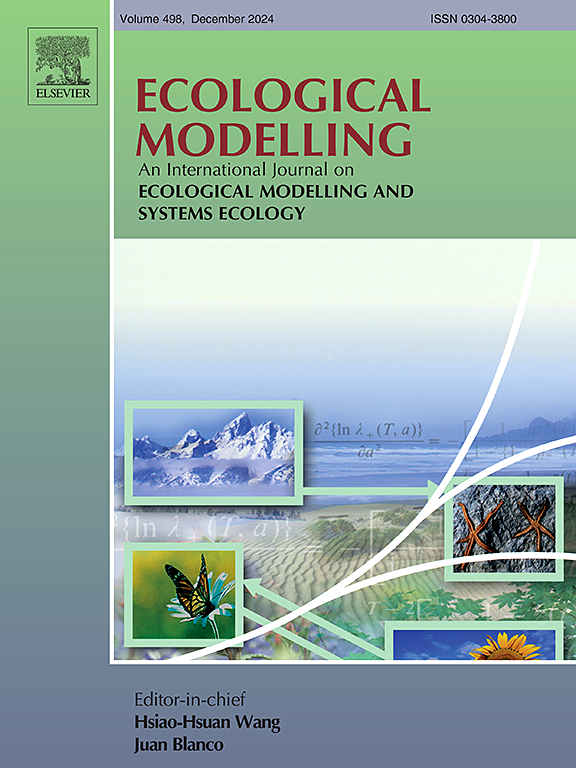Modeling rangelands as complex adaptive socio-ecological systems: An agent-based model of pyric herbivory
IF 2.6
3区 环境科学与生态学
Q2 ECOLOGY
引用次数: 0
Abstract
Rangelands cover approximately one-third of the earth's land area, at least one billion people depend on these lands for their livelihoods, and most rangelands have been degraded by inappropriate land use practices. Overgrazing and suppression of fire have facilitated encroachment of woody plants in what formerly were more open grasslands. However, proper management of fire and grazing (pyric herbivory) can mitigate woody plant encroachment. Although the basic ecological dynamics of rangeland ecosystems are well known, the long-term effects on local vegetation dynamics of ranch-level management decisions, particularly those involving the use of prescribed fire to limit woody plant encroachment, are less well understood. As a proof of concept, we describe a spatially explicit agent-based model of pyric herbivory that integrates biophysical and managerial components to simulate shifts in canopy cover of woody plants, forage production, and cattle production resulting from ranch-level management decisions to adjust grazing pressure and prescribed fire regimes.
We followed the pattern-oriented modeling approach to evaluate the usefulness of our model in exploring the effects of different pyric herbivory management schemes on a hypothetical 4000-ha ranch in the semi-arid rangelands of the southern Great Plains of the USA. Model evaluation simulations generated the expected shifting landscape mosaics of woody plant canopy cover, forage biomass, and grazing pressure that typify pyric herbivory. The most noticeable trend emerging from model application simulations was the effect of the relative sensitivity of adaptive management rules to changing ranch conditions on the ecological condition (an index of potential forage productivity) of the ranch and on the sale weight of calves. At relatively lower stocking rates, there was a noticeable increase in both ecological condition and sale weight of calves as adaptive changes to stocking rates or burning thresholds decreased in sensitivity to changing ranch conditions. However, these trends were not noticeable at relatively higher stocking rates. These results, while ecologically interpretable, are not realistic within a real-world ranch management context and we do not intend for our model application simulations to serve as a basis for real-word management recommendations. Nonetheless, we suggest that these simulations provide a proof of concept regarding the usefulness of spatially explicit, agent-based models, which explicitly integrate biophysical and managerial system components, in exploring the management of pyric herbivory.
求助全文
约1分钟内获得全文
求助全文
来源期刊

Ecological Modelling
环境科学-生态学
CiteScore
5.60
自引率
6.50%
发文量
259
审稿时长
69 days
期刊介绍:
The journal is concerned with the use of mathematical models and systems analysis for the description of ecological processes and for the sustainable management of resources. Human activity and well-being are dependent on and integrated with the functioning of ecosystems and the services they provide. We aim to understand these basic ecosystem functions using mathematical and conceptual modelling, systems analysis, thermodynamics, computer simulations, and ecological theory. This leads to a preference for process-based models embedded in theory with explicit causative agents as opposed to strictly statistical or correlative descriptions. These modelling methods can be applied to a wide spectrum of issues ranging from basic ecology to human ecology to socio-ecological systems. The journal welcomes research articles, short communications, review articles, letters to the editor, book reviews, and other communications. The journal also supports the activities of the [International Society of Ecological Modelling (ISEM)](http://www.isemna.org/).
 求助内容:
求助内容: 应助结果提醒方式:
应助结果提醒方式:


